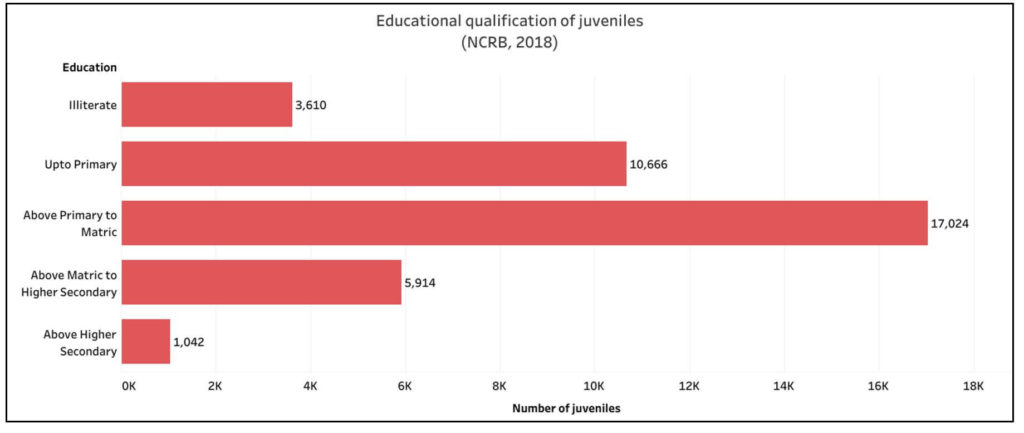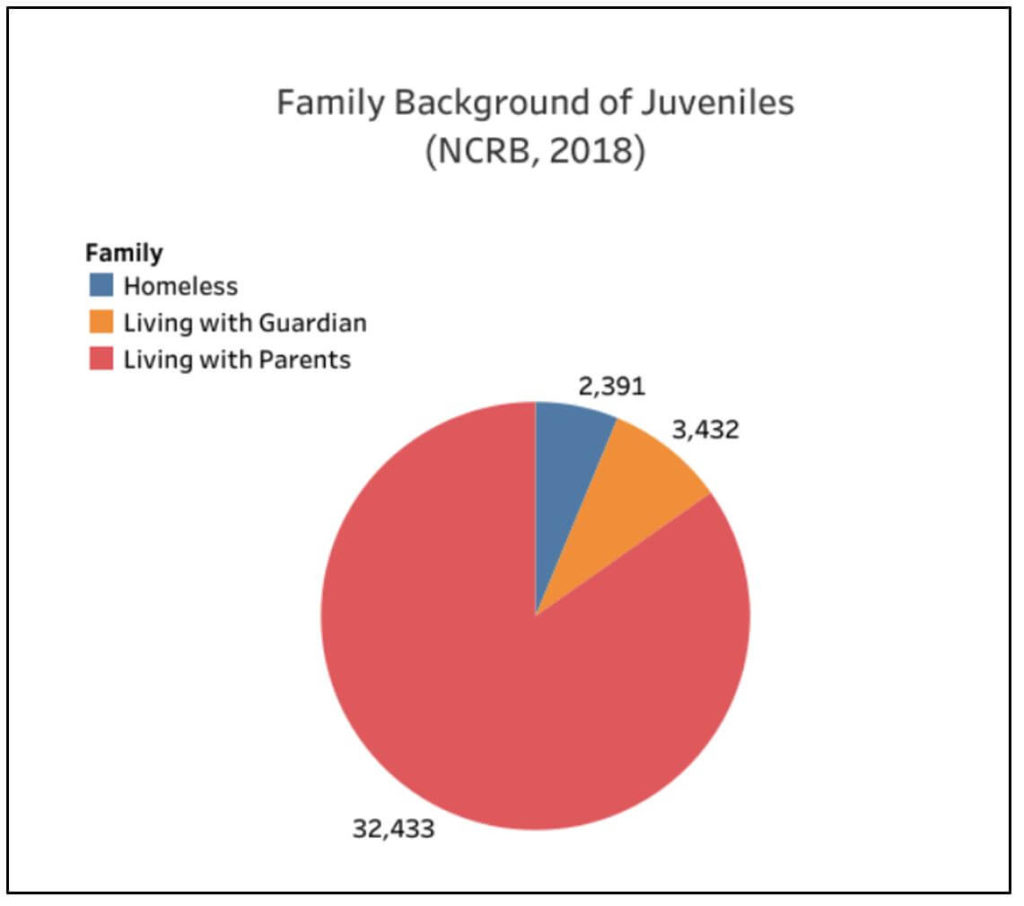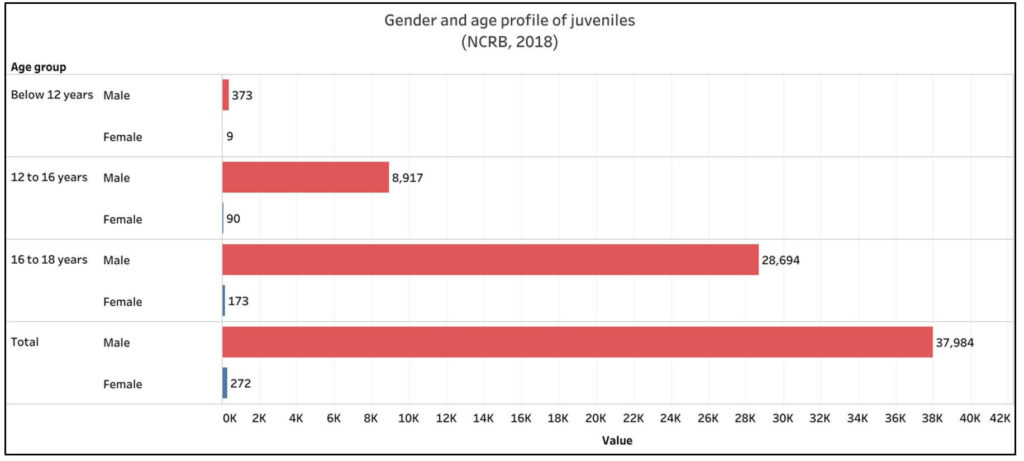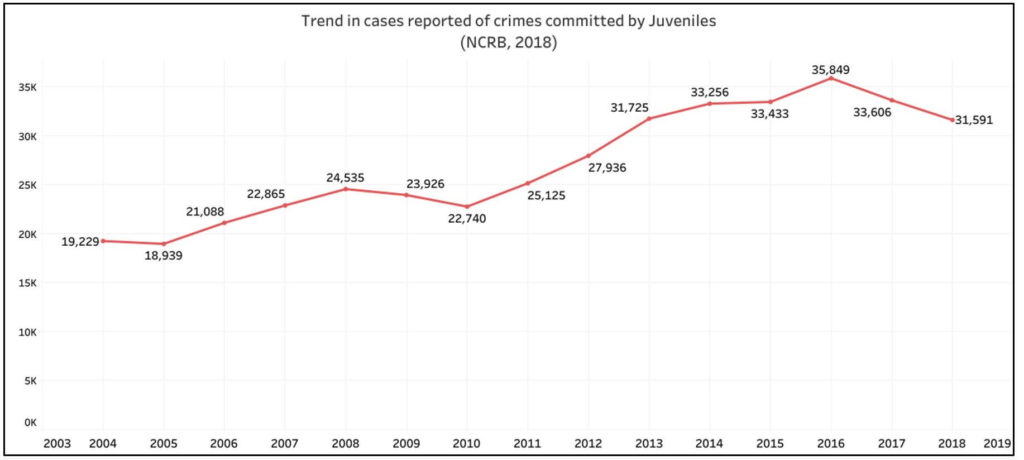As per the 2018 ‘Crime in India’ report, the number of crimes reportedly committed by Juveniles was more than 31000, down almost 6% compared to 2017. More than 99% of the juveniles apprehended for these crimes are boys.
Juvenile delinquency or criminal activity by children below the age of 18 years continues to be a topic of discussion following the involvement of a juvenile in the Nirbhaya gang rape case that shook the nation in December 2012. The latest ‘Crime in India’ report published by NCRB for the year 2018 stated that a total of 31,591 crimes committed by juveniles were reported in 2018. Maharashtra alone accounted for 19% of these cases.
Maharashtra reported maximum number of cases committed by Juveniles in 2018
The number of ‘Juveniles in conflict with law’, according to NCRB, reflects the reported number of crimes committed by children below 18 years of age. Maharashtra reported the largest number of cases under this category in 2018, accounting for almost 19% of the national total. Not far behind, Madhya Pradesh accounted for 16.6% of the crimes. Incidentally Madhya Pradesh reported the greatest number of such cases in 2017. Delhi with 8.6% of the cases was third in the list. The top 10 states together accounted for 81.7% of the cases in 2018.

Majority of the crimes committed by juveniles were offences affecting human body and property
92% of the cases involving juveniles were IPC related crimes. The maximum number of cases, including both IPC and SLL, were that of offences affecting human body (37.7%). This included hurt and grievous hurt (47%), rape (13%) and assault on women to outrage her modesty (12%) among many others.
Property related offences amounted to 37.6% of all crimes involving juveniles. Theft alone constituted 70% of these offences followed by burglary constituting 16.8% and robbery accounting for 10%.
Cases under the POCSO Act, 2012 accounted for 45.4% of the cases under SLL.

91% of the juveniles had received at least primary level education
Most commonly presumed reason behind the involvement of juveniles in crimes is their education and parenting. The 2018 data reveals that almost 45% of the juveniles involved in these cases were educated between matriculation and higher secondary. About 28% had education up to primary level. Some 9% were illiterate.

85% of the juveniles involved were living with their parents
The family background as per NCRB report is the set up in which a juvenile was living. While almost 85% of the apprehended juveniles lived with their parents, 9% lived with guardians and only 6% were homeless.

99.3% of the juveniles involved were Boys
99.3% of the juveniles involved in these cases were boys and around three-quarters of the juveniles were between 16 to 18 years of age. A total of 382 juveniles or about 1% of all were below 12 years of age.

Number of crimes involving Juveniles has decreased since 2016
Overall, in fifteen years, the number of crimes committed by juveniles has increased by about 65%. During this period, 2016 saw the highest number of crimes by juveniles. Since then, the number has decreased by 6% each year.

Number of juveniles between 16 to 18 years of age, apprehended under IPC has decreased sine 2016
In the case of juveniles aged between 12 and 16 years, the number of them booked under IPC and SLL both dropped continuously since 2014. Except for 2016, the trend in the case of those below 12 years of age also shows a similar trend.

In the case of juveniles between 16 to 18 years, those booked under SLL crimes has increased between 2016 and 2018 while the same under IPC has decreased by 13.8% since 2016. Prior to 2016, there was a mixed trend in this number.
One reason for the decrease in the number of cases in the 16 to 18 year age group could be the Juvenile Justice (Care and Protection) Act passed in 2015, which came into force in 2016. The Act was passed on the aftermath of the Nirbhaya case with the intention to act as a deterrent for children from committing such crimes. This act contains a provision which permits the court to hold a trial of a child aged above 16 years, as an adult after a preliminary assessment, in cases he has committed a heinous offence.

The law describes heinous offences as those offences which have a minimum punishment of seven years’ imprisonment under any law. Rape and murder are examples of such crimes.

However, with the available data, it cannot be concluded that the amendment mentioned above is solely responsible for this declining trend since the number under SLL increased during this period and certain SLL provisions also come under heinous crimes.
The juvenile is produced before a Juvenile Justice Board for inquiry
A child who has been apprehended for having committed an offence will be placed under a child welfare police officer and then produced before the Juvenile Justice Board. Following an assessment, based on the kind of offence committed and its graveness, the Board decides whether the child can be sent home, should undergo counselling or be sent to a special home.
There are numerous factors which may influence a child to commit such crimes. It could be out of peer pressure, state of mind, drug abuse or even exposure to internet or television in addition to the socio-economic factors which can foster such a tendency. Parents, teachers, society and media, all have an important role in moulding children into adults and it is necessary that proper care and attention are given to children while they grow.
Featured Image: Crimes by Juveniles


